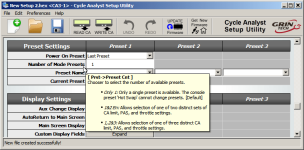What is happening is that the CA has cranked ThO down to the minimum in a futile attempt to slow the bike going downhill and there is a huge error wound up in the speed PID controller. It takes a while to counter that large error - your reported delay.
You are entering the realm of PID tuning - which is not always a happy place to go...
SLim->IntSGain controls the rate at which the past error both accumulates and is reduced. You can try increasing this to make the 'past error correction' change more rapidly. Some adjustment to
PSGain will likely be useful as well.
There is an explanation of how this works in the
[strike]Un[/strike]offical Guide section
"Appendix E. PID Controllers and Gain Parameters". Basically, you have the situation illustrated below and are getting hosed by a large "I" value. Because we can't stop the integral error term from maxing out on a long descent, one strategy is to make the associated
IntSGain term as large as we can (without oscillation) so that the accumulated error is reduced quickly. There's a tuning procedure there that in general may help you get the speed limiting as responsive as possible without oscillating.
speedPid5_small.png




